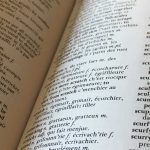Morse code
Remus Carey uses Morse Code to communicate at various points in his career. Although it is falling out of use due to various technological advances and other means of reliable communication, there is one particular episode within the Sarnian series where he has to fall back on this most universal of languages, as his only means of sending a message.
Morse Code alphabet
B -...
C -.-.
D -..
E .
F ..-.
G --.
H ....
I ..
J .---
K -.-
L .-..
M --
N -.
O ---
P .--.
Q --.-
R .-.
S ...
T -
U ..-
V ...-
W .--
X -..-
Y -.--
Z --..
1 .----
2 ..---
3 ...--
4 ....-
5 .....
6 -....
7 --...
8 ---..
9 ----.
0 -----
Each character is built up using a series of dots and dashes with the most often used in English represented by some of the simplest combinations, such as a single dot for E, a single dash for T and, most famous of all, three dots for S and three dots for O (so the emergency code SOS — Save Our Souls — is --- ... ---).
Although it my look seem entirely illogical translating the alphabet into such a confusing combination of symbols, it was originally developed for use on the telegraph where it was only possible to send an electrical current over a wire, turning it on and off every time the operator completed a circuit at the sending station.
In the original implementation, developed by Samuel Morse and others, when the circuit was complete it would make indentations in a piece of paper at the receiving station, which would indicate to the operator which number the sender was spelling out, and enable them to look up the corresponding message in a code book.
Alfred Vail went on to expand the system to include all of the letters in the English alphabet, and the system was later upgraded to swap out the paper for a buzzer.
So, when the circuit was complete it would cause a buzzer to sound at the receiving station. By varying the length of time that the circuit was complete it was possible to control how long the buzzer sounded for, and thus use the code above to spell out individual letters. Likewise, by using the same combinations with a flashing light, it was possible to communicate silently — particularly over the sea.
Morse code in brief
Morse is one of the most enduring code systems ever developed, being relatively easy to learn and requiring nothing more than a means of making sounds of different lengths of with differing intervals between them — even something as simple as knuckles knocking on a door. Although it is less widely known now than it once was it’s still used extensively, and it’s easy to find it being broadcast on short wave radio frequencies.
Useful to know...
Variations have been made to the base Morse code system to cater for different languages. It was originally developed as American Morse, with has since been codified as International Morse. The German railway system modified and rationalised a version of the system (called Gerke) for its own use, which caters for accented characters and in some areas — in particular numbering — differs quite widely from the international standard.

FREE Guernsey newsletter
Don't miss our weekly update on Guernsey's fascinating history. We promise never to sell your data to anyone else, and there's a super-easy unsubscribe link on the bottom of each email so you can leave whenever you want.
See also...
Speedboat used by the consortium
Guernsey has had several flags over the years
Summary of the complete book on one page
Ancient Guernsey legal objection
Traditional Guernsey fruit bread








